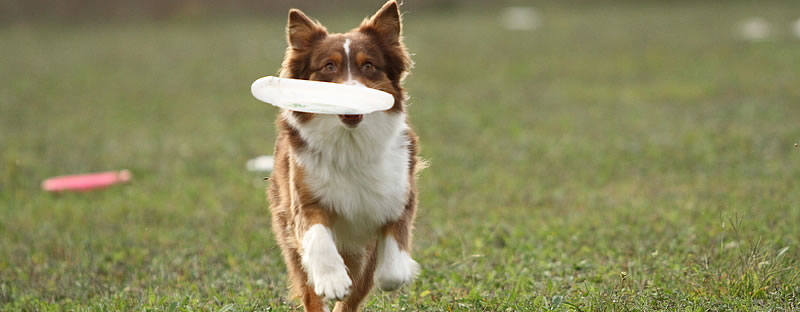
A Faster Toss and Fetch Retrieve with 2 Discs and Bitework
A few Days ago I wrote about Improving a Toss and Fetch Retrieve and said that I’d share two techniques that we use here at Pawsitive Vybe to increase our Retrieve speed in our dogs. Here’s is the first technique, Bitework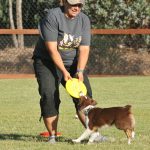 Bitework is an activity or a game that consists of biting and dropping a toy on cue. Cued Bites and cued Drops (and Gives) can be used to teach and reinforce many behaviors.... More.
Bitework is an activity or a game that consists of biting and dropping a toy on cue. Cued Bites and cued Drops (and Gives) can be used to teach and reinforce many behaviors.... More.
These techniques will be covered in complete detail in pictures and video in our Disc Dog Foundation Class which starts Wednesday and added to the first update of the DiscDogger’s Toolkit.
Adding Value With Bitework
Adding value to the area around the handler is vital for getting a strong retrieve. This is nowhere more important than in the game of Toss and Fetch.
In Toss and Fetch, some dogs naturally perceive the area around the handler as extremely valuable because that is where throws come from so they haul butt back to the handler. But I would think dogs like this are a minority. The rest of the disc dogs our there perceive different degrees of value around the handler – from ho-hum to outright distrust. And why shouldn’t they? Not only do they have to give up the disc but they have to deal with an agitated handler who is pressured by the clock and a rabid frizbeast.
One of the ways to add value to the area around the handler is through bitework. A healthy dose of bitework let’s a dog know that the area around the handler is for both dropping and biting. Of course this understanding has not been generalized to the game of Toss and Fetch because the handler has more than one disc, but don’t write it off as useless. It creates value and habituates the dog to dropping a disc in front of the handler while in high drive. That is a big deal.
Having this kind of Bitework installed on a dog is invaluable to playing the game of disc.
Drop to Bite
Once a dog knows how to bite a disc in the hand, a cued Bite can be used as reinforcement in the game of disc at any time. In the case of Toss and Fetch training, the bite is offered as reinforcement for a cued Drop during the retrieve.
Take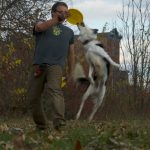 A Take is a cued Bite that replicates the placement and timing of a throw. Usually used with overs, vaults, and flips, the Take is a powerful teaching tool for creating habitual leaping... More two discs and make a normal Toss and Fetch throw. After the dog catches and starts to return with the disc, call the Drop. When the Drop happens, mark it,”Yes!” and reinforce with a Bite on a disc in hand. Give
A Take is a cued Bite that replicates the placement and timing of a throw. Usually used with overs, vaults, and flips, the Take is a powerful teaching tool for creating habitual leaping... More two discs and make a normal Toss and Fetch throw. After the dog catches and starts to return with the disc, call the Drop. When the Drop happens, mark it,”Yes!” and reinforce with a Bite on a disc in hand. Give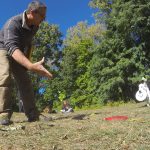 The Give is a retrieve to the hand. A cued Give is a foundational skill that is not super useful in the actual performance of disc dog freestyle, and has huge applications for... More a little tug and let the dog win. Ask for the Drop, mark it when it happens and reinforce by making another toss.
The Give is a retrieve to the hand. A cued Give is a foundational skill that is not super useful in the actual performance of disc dog freestyle, and has huge applications for... More a little tug and let the dog win. Ask for the Drop, mark it when it happens and reinforce by making another toss.
This works two critically important skills to Toss and Fetch and also gives you a bonus skill that is useful in Freestyle.
Drop on the Run=Bite
Let’s start with the bonus skill. The bonus skill I’m talking about here is a cued Drop on the run. When the dog is coming back with the disc, just call the drop where you think it is likely to happen. Having a good understanding of your dog and using that knowledge to predict when the drop is likely to happen allows you to, very simply, reinforce a Drop on the run. If this done enough, the dog will be classically conditioned to Drop on cue because Drop=Bite.
Fast Retrieve
This works a fast retrieve by giving the dog a reason to bring the disc back quickly. The Bite is a great reason to run hard back to the handler,“I better hurry because when I get there there’s going to be some Bitin’ going on!” Enough of this work will classically condition a dog to run, hard, back to the handler because that’s where the Bite happens.
Where’s the Retrieve?
Some of you may be skeptical, as during this drill there’s no real Retrieve going on. This is where this game gets super cool. We are cuing the Drop, right? The cued Drop is making the bite happen, right? So what happens if we don’t cue the drop?
Because the cued Drop makes the bite happen, and the dog can’t Drop if he’s not carrying it, then he will be sure he is carrying that disc when you give that drop cue. It’s just beautiful!
An aggressive approach is cultivated because the dog knows the Bite is going to happen on the handler. If the Drop cue doesn’t happen and the dog is running hard back towards the handler then he will wind up arriving before he knows it will be chomping at the bit to Drop for the next throw.
Drop at the Handler
Working with two discs in Toss and Fetch creates a successful cued Drop at the handler while the dog is high on drive.
After the Cued Drop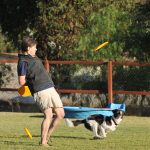 A cued Drop, or Drop for short, means that you tell your dog when to drop, purposefully, and upon your discretion. A cued Drop is a must in the game of disc in... More creates the opportunity to Bite and the dog takes wins the disc, cue the drop at the front of the handler, just as if the dog has arrived with the disc on a normal Toss and Fetch retrieve.
A cued Drop, or Drop for short, means that you tell your dog when to drop, purposefully, and upon your discretion. A cued Drop is a must in the game of disc in... More creates the opportunity to Bite and the dog takes wins the disc, cue the drop at the front of the handler, just as if the dog has arrived with the disc on a normal Toss and Fetch retrieve.
Cue the Drop and wait. Once the drop happens, mark it,”Yes!”, then slowly and deliberately pick up the disc and make the next toss. Whoa! That’s kind of like Toss and Fetch, isn’t it?
Key Points
The handler must take ownership over the Drop. If the Drop is not cued, then the dog will believe that any Drop, at any time, will work to get the Bite or the next throw. That will not translate to single disc at all.
Start to call the drop later and later. Once the dog has some experience with this game, the Drop can be cued later and later, meaning that the cued Drop happens closer and closer to the handler. It doesn’t take long at all, think minutes, not weeks, to get the dog on top of the handler before the drop is cued. Reinforcement can be taken to an extreme with regrab and tug on the disc when the dog arrives at the handler and before cuing the Drop. It is kind of magical.
A Drop is different than a Give. If you want a dog to work Toss and Fetch with a Give then the Give skill needs it’s own cue.
So that’s about what I got here on Bitework for a Toss and Fetch retrieve. If you want to get detailed video instruction you’ll have to sign up for class or get a Discdogger’s Toolkit.
Feel free to call me out with questions and comments in the comment section below. And don’t hold back. Not everyone is going to buy into this right off the bat and the more we discuss it the more I can address the issues that people may have with it and deliver a better understanding.

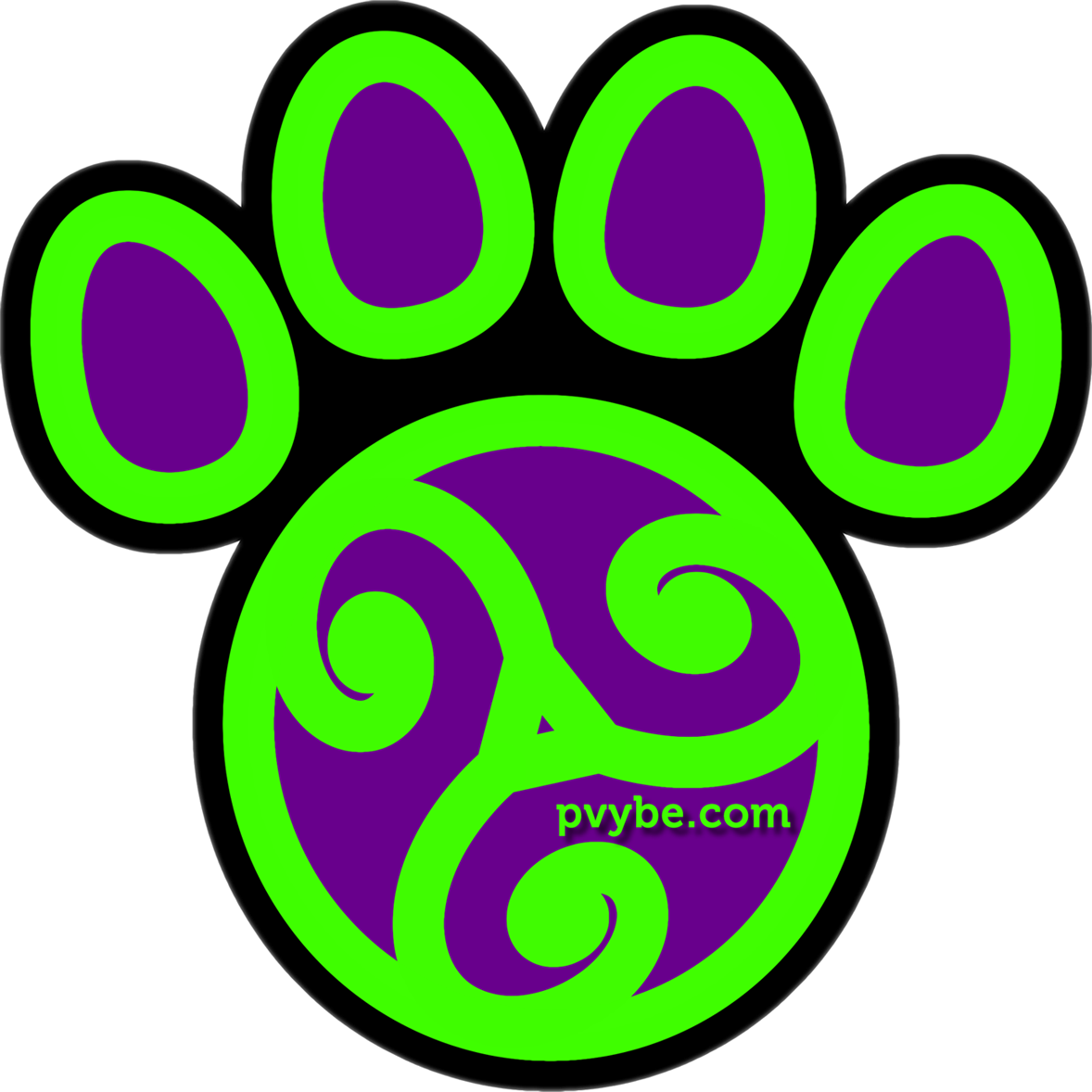


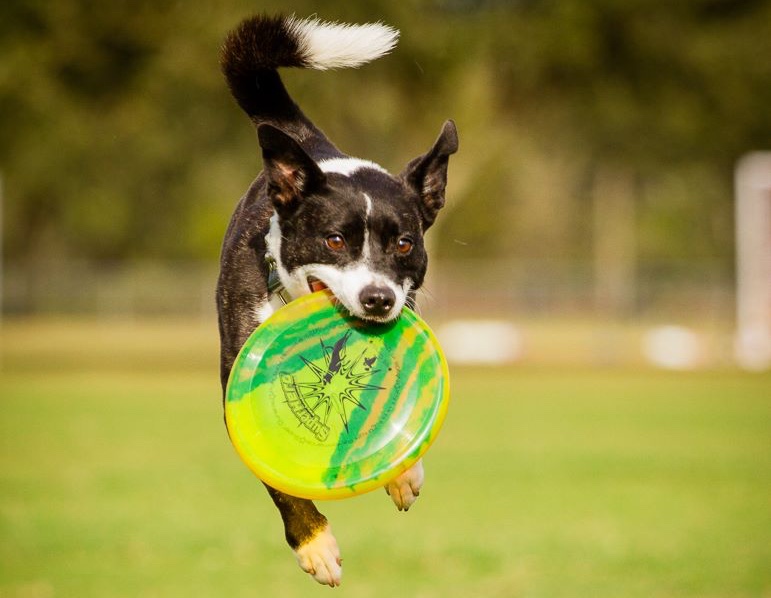
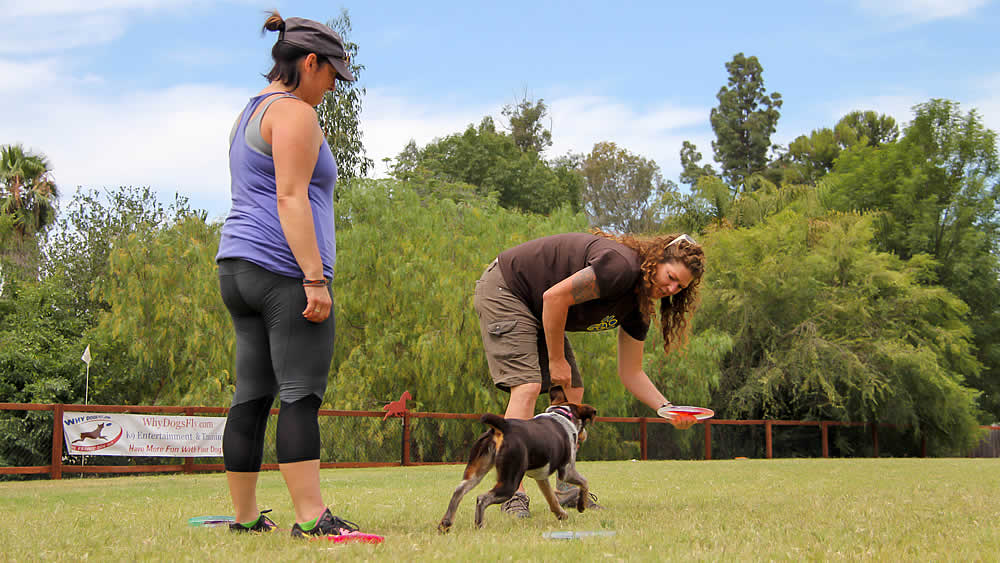
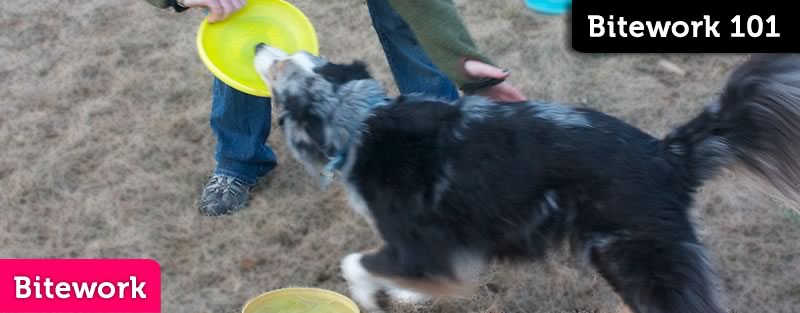
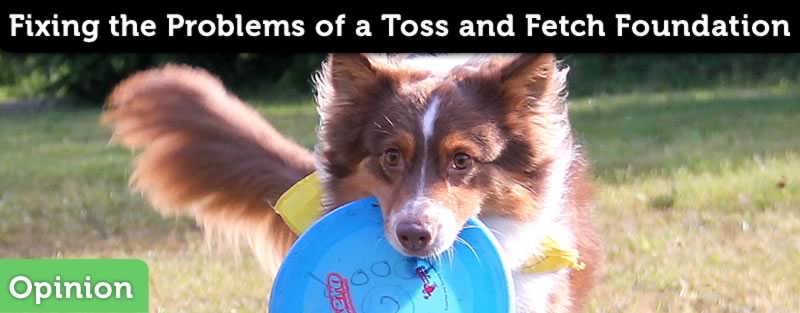
I will endorse this approach fully!
How about a blog post about what to do with a dog that, after a year of bitework and dismissal, will tug with discs enthusiastically (not as enthusiastically as a tug rope, but decent) but has little to no interest in chasing tosses or rollers? Then add to the hypothetical that the dog has prey drive to spare and will chase and retrieve a ball all day long.
Thanks for the endorsement, Tania.
As far as your issue, that is very boring. It’s obviously a learned behavior, which is good, but unlearning behavior is a bit more difficult. It’s simple, but not easy, and simple but not easy is really hard to write about.
It is most likely too much Bitework and inappropriate consequence on as little as a few key reps of the rollers/throws.
Send me a note with some more information or send me a video and I’ll take a look at it and see if I can get something together for the rollerless dog.
Peace~
Well, I suppose hearing that I screwed it up is better than hearing that my dog is just hopeless!! I will try to get some video in the next week or so. Thanks Ron!
I have to control Lupo’s drop. He drops 100% when I que but sometimes drops without a drop que. Do you suggest some bitework with a toy in the house. Bite – Drop – toss and wait as long as possible predicting his drop when he comes back and call it before it happens? Then offer a bite and start all over trying to close out the distance between his drop and myself? I think you explain it really well in the article wih the “Start to call the Drop later and later. Once our dog has some experience with this game, we can start to cue the Drop later and later, meaning that the Drop happens closer and closer to the handler.” Just want to be on the safe side here.
PS: If it happens outside can I ignore it for now until we have success with the the toy in the house or should I be 100% consistent on that? Is a stop – reset an option here?
This is what I have been talking about – waiting longer to cue. You’ve been consistently cuing the drop very early, so the common thread is both distance and cue – which one is stronger, we don’t know until the dog proves it to us – seems like Lupo is proving to you that the distance is the better cue. Randomize the distance while keeping up with success. Get 10 reps of good, cued drops, then test it with another meter or so… repeat.
Reinforcing on you with a bite or behind you – ( Flipping the Field – is what you want to focus on when working the drop specifically, but you can also just reinforce normally while just playing the game in general.
The key is to get multiple successes then test. It should be, minimum 8/9 to 1 success to failure ratio.
Stop and reset (you go pick up the disc while the dog waits) is an option for errant drops. As is asking the dog to go get it ( not so good, but acceptable). Waiting for the dog to go get it is a good approach as well. Just be sure to predict and cue your drop for success after he picks it up again.
“Randomize the distance while keeping up with success” that’s the key for us. I have been quing early to get the game going. We ll work on that, thanks a lot
Awesome stuff, this is exactly what I need to do with Rigby. We freeshaped the drop with bitework as recomended by you months ago and she is great with two discs in T&C but needs some finetuning and more reinforcement on the retrieve….this seems like exactly what the doctor ordered. Wish i would have found this before going out for practice yesterday….it was 70 degrees, today 40 with rain and snow.
Right on Bryce! Let us know how it goes…
Peace~